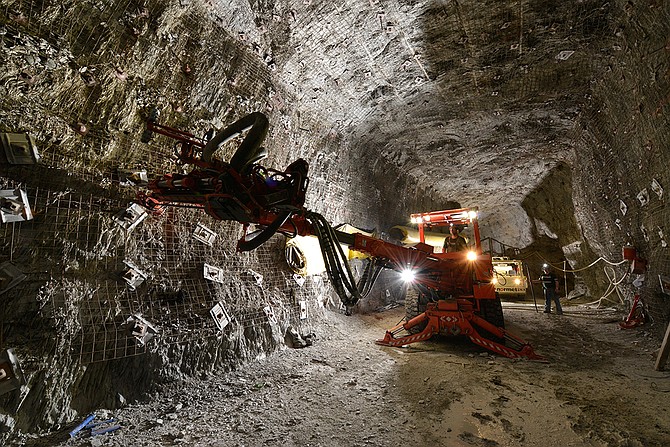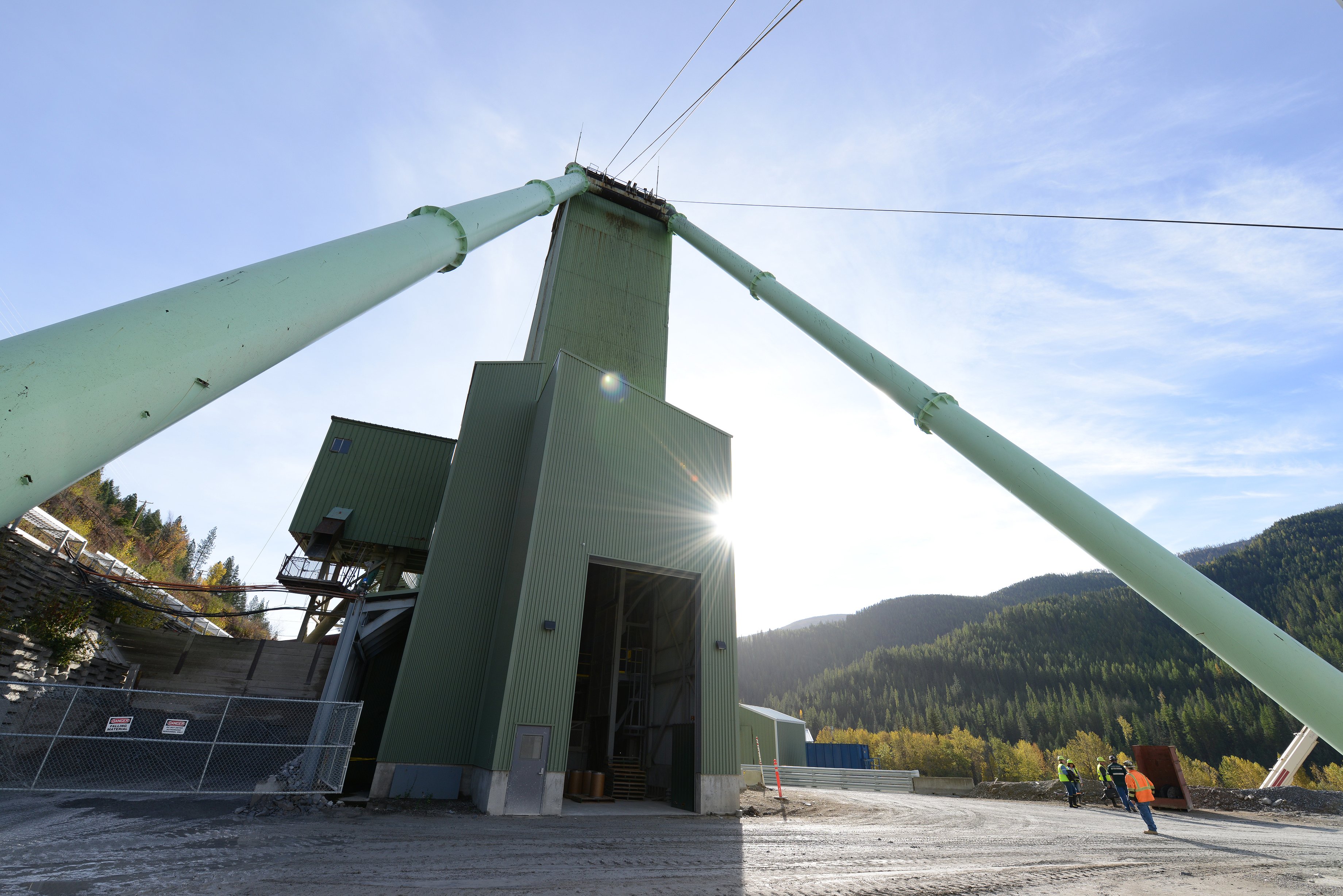'Mined in America'

Hecla Mining Company's underhand closed bench technique has helped make safer mining shafts with fewer seismic issues and sped up mining as a result. The technique uses cemented mill tailings for backfilling areas that have been dug out. This makes the mining process in the following cuts less dangerous because the miners are always working beneath a reinforced cemented-backfill if the stress to the mine causes a rock burst or violent failure of rock.
COEUR d'ALENE — With 132 years of mining in the Silver Valley under its belt, Hecla Mining Company, headquartered in Coeur d'Alene, has survived the century milestone, bringing in silver, lead, and zinc from the depths of the earth.
Mike Satre is the director of governmental affairs for the company and said that its success has always been in welcoming new technology rather than sticking to the old methods.
“If you want to talk ‘made in America,’ it starts with ‘mined in America,’ and here we are,” Satre said.
Hecla’s Lucky Friday mine has been in operation for over 60 years, and based on its continued success, they have launched enterprises in Canada with the Keno Hill Mine in the Yukon and new Greens Creek mine in Admiralty Island, Alaska. Hecla’s corporate headquarters used to be based in Wallace for many years but is now located in Coeur d’Alene.
“Multiple generations of North Idahoans have worked that and have been really proud of that legacy...The company got started in North Idaho in the Silver Valley and that was its focus for many years. In the 1900s, there were times of expansion and contraction, but we never left the North Idaho home,” Satre said.
For engineers, geologists, metallurgists, and chemists, mining perhaps hasn’t always been the industry of choice, but there is now a lot of opportunity to refine mining practices with an expanding range of scientific skills.
“What we do today is not what the mining industry did 30, 40, 50 years ago. It’s truly a modern innovative industry with broadband wireless access points in the ground and the ability to remotely access equipment,” Satre said.
In 2022, silver production increased by 24% to 4.4 million ounces for Lucky Friday Mine thanks to a new technique Hecla developed called the Underhand Closed Bench mining method.
According to internal reports, the mine in Mullan produced 3 million ounces of silver as of the end of July 2023 and was on schedule to produce 4.5 to 5 million ounces of silver before a fire broke out in August in the secondary underground escapeway.
Satre said that it was an impressive feat to see the team come together after the fire changed the company's plans.
“We’ve been able to hit our marks as we work to recover from that situation and keep everybody employed and that’s really important. No one was hurt, no one was injured and our infrastructure wasn’t really impacted. The silver isn’t going anywhere,” Satre said.
A new technique that was developed at the Lucky Friday Mine called Underhand Closed Bench has paved the way in clearing time and resources from the mine’s progress, so prior to the fire, the mine was in great shape to meet or eke ahead of last year’s production.
“What we’ve always known with the Lucky Friday mine is that as we go deeper, we’re in a higher rock stress environment, and as we’d go deeper, there were always concerns. We would have delays as we waited for seismic activity to subside. Our traditional mining method is drilling in front of us, detonating the round and mucking, digging that out and going in and supporting it and doing the same thing again and again as we go forward,” Satre said.
With the new method, as a mine shaft is expanded, it starts from the original cut but then drills down, mines out an area, and fills it back out before mining underneath it.
“Now we drill down and we’re able to de-stress and detonate all of that rock at one time. We basically have one big blast or a series of big blasts and now what we do is come in and start digging in that rock, filling above us as we go down and we only have that one seismic event from that blasting as opposed to multiples before,” Satre said.
Underhanded Closed Bench methods minimizes the exposure of miners to the risks that traditional mining methods present and creates a faster and more productive tonnage of material from the earth.
Hecla was recognized by the Society for Mining, Metallurgy, and Exploration Innovation award in 2022 for the practice’s safety measures and time-saving efficiency.
“We produce 40% of the domestic silver supply in this country between the silver produced in Alaska and Idaho. That’s become incredibly more important because silver is being used in renewable energy technologies,” Satre said.
A growing concern about the fate of the silver business was present in the industry in the late 90s and early 2000s when the switch from traditional film to digital media was taking place.
“One of the biggest industrial uses for silver for many decades was film and that went away, but now we have this massive demand for photovoltaic cells. That’s been pretty amazing to watch over the years,” Satre said.
Having the technology to monitor mine data without being underground has vastly improved over time as targeted broadband internet spots have changed the game and improved safety by removing exposure risks.
“We can sit here in the office and operate an underground motor from miles away and be able to increase our efficiency through the addition of technology in the amount of data that we’re able to collect and analyze in underground environments, it’s just amazing, even compared to 10, 15 years ago,” Satre said.
In order to support nonprofit institutions or educational opportunities in a way that is separate from the company's annual profits, Hecla created the Hecla Charitable Foundation in 2007. Last year, the foundation contributed $80,000 into Idaho charities and educational opportunities, including local programs such as the Wallace City Pool, Dave Smith Memorial Christmas Fund, Shop with a Cop through the Osburn Police Department, and the Shoshone Crisis Resource Center.
Hecla is planning on continuing to press forward and embrace new ways to produce silver in its current holdings.
“We have multiple places where we have multiple generations of miners working for us. What happens is we become part of the fabric of the community wherever we operate. We’re not coming in, mining for a few years, and then going away somewhere else. We’ve been in the Silver Valley for 132 years,” Satre said.
Hecla employees in Idaho and across North America:
Lucky Friday Mine: 380
Coeur d’Alene headquarters: 40
The total employees in the U.S. and Canada is 1,900.











